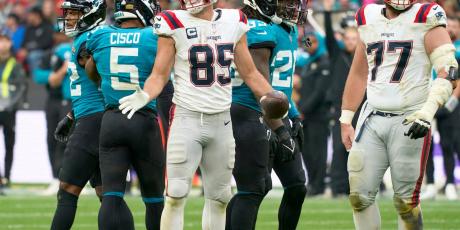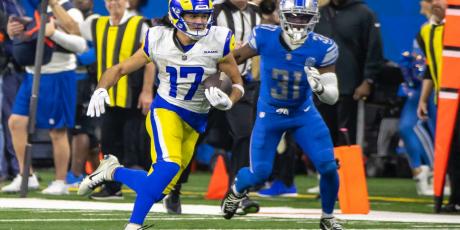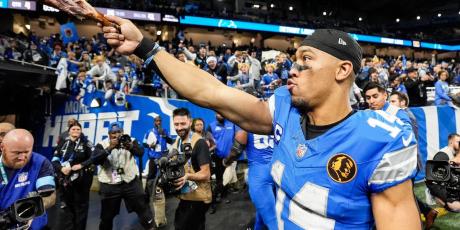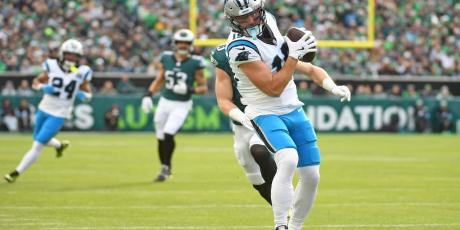Perfect Draft: 3rd in a 12-Team ESPN PPR League

Count yourself lucky should you find yourself with the third pick. Draft trends in 2018 have shifted priority to running backs. The 2017 season featured 11 running backs selected in the first two rounds of PPR drafts, according to Fantasy Football Calculator. This amount has increased to 14 in 2018. Regardless of who would be taken after my first-round selection, the 1.03 guaranteed me an elite running back to anchor my team. A pick this early allows the most flexibility as multiple draft strategies can be built off a projected high-end running back. Owners should identify key players in the second round to add to your roster with an eye on value in the later rounds.
Editor's Note: Click here to see all our Perfect Draft series entries.
In this draft, I’ll be going through a perfect draft from the third spot in a 12-team PPR league. Each pick was optimized using projections and value-based rankings from the 4for4 Draft Hero tool, along with ADP from ESPN.
Draft Hero Settings
- Roster settings: 1QB, 2RB, 2WR, TE, K, DEF, seven bench spots.
- No QBs before the seventh round: The opportunity cost for a QB prior to the seventh round is difficult to manage should that QB bust or be injured. It’s been shown that depth at positions you start more of (i.e. running backs and wide receivers) have a more positive effect on your fantasy outlook.
- No TEs before the fifth round: Again, we look to opportunity cost. The ‘onesie’ positions are important, but their name emphasizes the problem. You only start one. The need for only a single tight end each week should give higher priority to other positions. So, I’ll look for value elsewhere until a suitable option can be found.
Jump to Pick 1 | 2 | 3| 4 | 5 | 6 | 7 | 8 | 9 | 10 | 11 | 12 | 13 | 14 | 15 | 16
Round 1, Pick 3 - RB LeVeon Bell, Steelers
Early first-round picks have been reserved for the elite tier of running backs. These are players involved in both the running and passing game for their respective teams. Based on the scoring format, the Draft Hero shows Bell to score the most points over the season compared to the other recommended players available. Bell’s value based draft (VBD) score of 162 was the clear choice compared to the rest (125, 136, 131, and 92). There’s no way a player of Bell’s potential would fall to me at Pick 22. If you find yourself in this position, thank the fantasy gods and grab a top-tier running back to anchor your team. With such a strong start, this would allow me to be flexible in the second round depending on who was still on the board.
An RB-RB or RB-WR start were both considered here. The critical component in either strategy is value. Not just any running back or receiver should be selected. Players who project to be the No. 1 on their team create the greatest advantage for your team. The ‘zig, while others are zagging’ mantra, was kept firmly at the forefront of my thought process as the second round began.
Round 2, Pick 22 – RB Jerick McKinnon, 49ers
‘Zig while others are zagging’. The recommended picks were all wide receivers. Each of them would have been fine additions based on VBD. All but Evans would have been reaches based on average draft position (ADP). This made me look at the running backs available. McKinnon immediately jumped off the page with a VBD of 64. It surpassed the available wide receivers despite being ahead of ADP. Here’s where cost and value trade-offs occur. If the cost differential isn’t egregious, then value can take priority. Positional runs can be difficult to navigate. With eight receivers selected before my pick, it’s natural for drafters to feel a sense of urgency to not ‘miss out’ on a player at the same position. It’s critical to look for value that can be leveraged at all positions. This ensures that opportunity cost isn’t sacrificed at the expense of an emotional reaction.
The added benefit to drafting near a turn is that the space between picks is short. Worst case scenario, four receivers out of the five recommended at my current pick would be gone. That would instantly bump their value at that draft cost and lend some credibility to passing on them at 2.10. Preferred targets in the third round based on 4for4 projections were (in order): Larry Fitzgerald, Doug Baldwin, Adam Thielen, Tyreek Hill, and then Mike Evans.
Round 3, Pick 27 – WR Doug Baldwin, Seahawks
The process for taking a second running back worked out. In doing so, it allowed me to draft the receivers on the list closer to their ADP. In this situation, the decision came down to team situation. The Draft Hero projects four of the five receivers to score within eight points of each other. However, Baldwin has the earliest ADP pointing to the largest cost savings drafting him at 28th overall. His recent injury concerns are worrisome, but no updates have been provided. For the purposes of this draft, it was assumed he’d be ready for Week 1.
Looking at my team through the first three, I had two primary running backs for their respective teams along with a primary receiver for his team. Despite the long wait ahead of me before my next pick, these starting three gave me flexibility for my fourth-round selection.
Round 4, Pick 46 – WR Alshon Jeffery, Eagles
Drafting a second running back early looked to be paying off at the end of the fourth round. The VBDs of both Jay Ajayi and Alex Collins were solid given the cost (30 and 40, respectively), but my early investment at the position deprioritized the pick. The receivers offered slightly more upside, but either of the backs would be a priority pick in the following round.
Alshon Jeffrey is the 18th-highest ranked wide receiver on an offense that’s skewed towards the pass (54.4% passing in 2017). Jeffrey’s weekly touchdown upside gives him a slight edge over a player like Tate. The Baldwin-Jeffrey pairing offers weekly floor with more chances at a touchdown given Jeffrey’s red zone targets. Eleven receivers were selected prior to my pick. Jeffrey’s value presented an ideal pairing at a reduced cost (ADP of 44). In addition, the short span between my fourth- and fifth-round picks would be useful. Team 2 and Team 1, picking after me, were both lacking at receiver. This made it likely that a running back of value would be available for me during the next round.
Continue reading to see how the rest of Chris' roster shakes out and to see which picks he deemed to be the best and worst values of the draft, as well as any final takeaways that may help you on draft day...
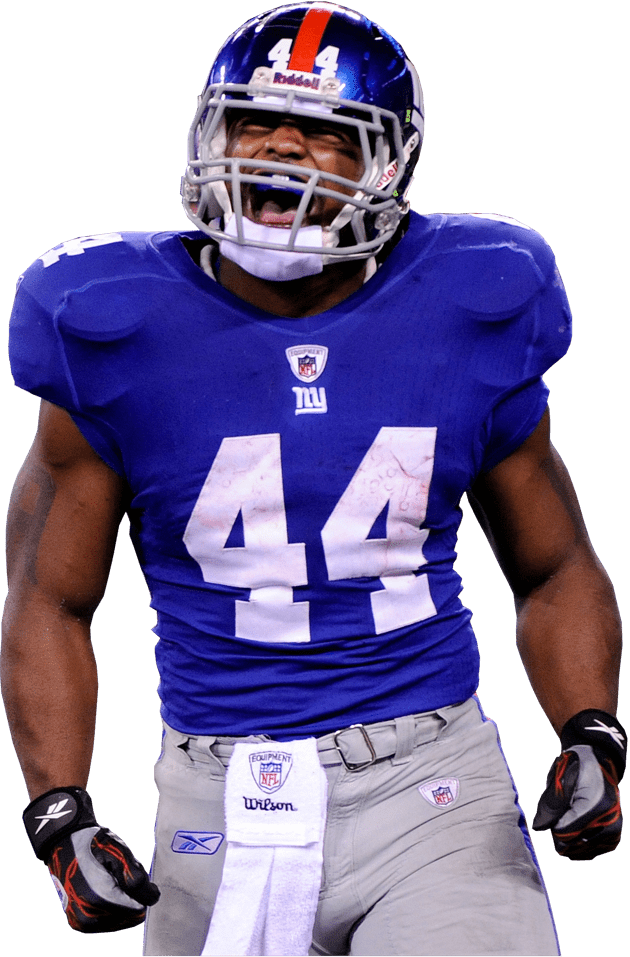
- All Premium Content
- The most Accurate Rankings Since 2010
- Expert Draft Picks w/DraftHero
- Highest Scoring Lineup + Top Available Players w/LeagueSync
- ...and much much more

